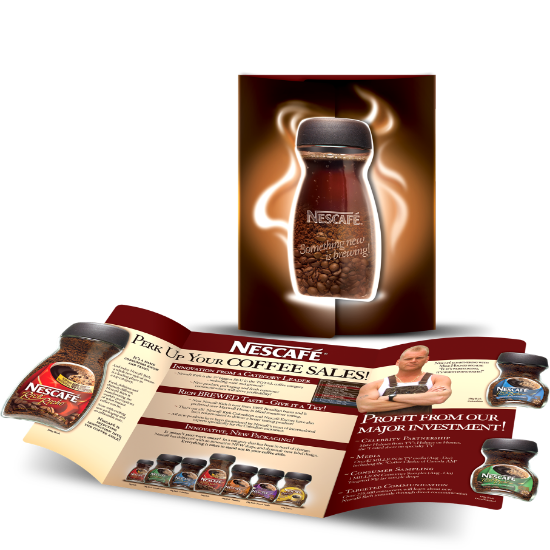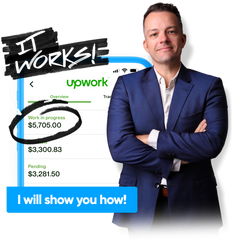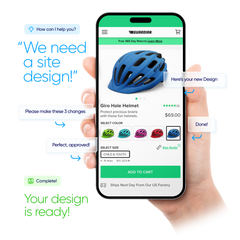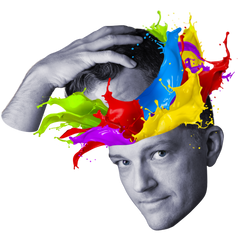Design, Development, and Marketing Services
Brochure Design
Give your audience an interactive and organized way to learn more about you! A very comprehensive marketing tool, a brochure that will leave a lasting impression.
A comprehensive and custom brochure design that leaves a lasting impression on potential customers
What is a brochure and why do you need it?
A brochure is a piece of marketing collateral that helps companies market their products and services to their prospects and clients. Brochure designs traditionally come in a variety of forms like single-fold, bi-fold, or tri-fold forms containing one or multiple pages of information and images. Other than paper there may be digital varieties as well. What makes a brochure more effective than flyers or a single page pamphlet in its ability to deliver more information in the same amount of printable area with the added element of visual interest created by the folds.
Now you may ask, why should you consider brochure design for something that may be accomplished by an email of a long-form PDF of your catalog? Brochure Design is versatile and can be applied to physical and digital mediums. Dieter Rams (former Chief of Design at Braun) say that “Indifference towards people and the reality in which they live is actually the one and only cardinal sin in design”; the reality in which people live in are their physical spaces. These spaces are the desks, coffee tables, and the lunchroom. Brochure design today is reclaiming some of that physical space with a beautiful brochure.
While your competitor's emailer lands on top of 20000 other emails somewhere in the Promotional or Updates inbox, your brochure takes physical space on your prospect's desk next to their cup of coffee and the to-do list for that day. Effective marketing strategies today include a mix of digital and physical mediums to engage with their customers. All your brochure needs is a fantastic design, high-quality prints, and an office address that's available publicly.
What do I need before I hire a brochure designer?
Brochure design in itself is an art. Just like fantastic packaging from your favorite brand, a brochure is packaging for your content. Today, there are integrated speakers, lights, and some low-resolution displays within brochures. Enabling this is beyond the functions of any brochure templates or online brochure maker with premade graphics and stock images. Whether you're selling a product or service, you need to have some basic elements for your business before beginning a design project.
A Brand Guideline
A complete brand guideline is key for a good and effective brochure design. Just like a website, the process of designing brochures requires all the key elements of a brand guide. At the very least, it should include a responsive logo design for different pages, a primary and secondary typeface (fonts) for your brand, a color scheme or palette to create graphics. A responsive logo is a type of logo that scales with the size of the collateral. In brochure design, this means a larger logo for the front page and a smaller logo on the remaining pages. A tone of voice will also be helpful to create copy for the brochure.
These elements provide a starting point for ideas and make the whole process of designing brochures very smooth.
Objectives
Before you begin the design process, you need to have a clear objective of why you want to design a brochure. The final product needs to be carefully targeted and designed to appeal to the prospect. The intent can be to educate, inform, or sell. Designers can only be helpful if you know what you want to achieve. This helps make decisions related to brochure types and removes uncertainty. It either meets the objectives or it doesn't.
Your target audience will also be important when deciding on your objectives. Go through your mailing list and current customers. You can then draw solid conclusions on aspects like age, gender, physical location, and likes and dislikes. Create customer personas if possible, these will help save time when you tell your designer about your objectives for your brochure.
images
Images are the lifeblood of any great brochure design. It's what makes the viewer consider picking up the brochure. Depending on your objectives, professional photos taken by a photographer for the cover will be a great addition. You should also have high-quality professional photos of your SKUs for physical product-based businesses. For service-based businesses, in-action images of the work, eye-catching service results, client images, and a professional image of your tools are some ideal inclusions. Use your own photos with a personal touch and avoid the use of stock images. People do business with people and not the image, so authenticity is important.
Content and Technical Specifications
When working with a brochure designer, they will ask for content that you wish to include in your brochure. While the final flow of the brochure would be recommended by a designer, you should get everything that needs to be included in the brochure. When creating content for your brochure, refer to your tone of voice in the brand guideline to write information and sales text. It's recommended that you work directly with a business copywriter to ensure your message matches your company's image. This includes the name of your company, taglines, introduction, and product or service descriptions, and also creates a clear call to action.
For the products and services, ensure that you have accurate specifications. These can be dimensions, weight, process descriptions, timelines, etc. Keep them brief since they generally go in condensed text boxes. The depth of knowledge is what differentiates a professional brochure from an amateur one.
It might be a good idea to share any previous marketing materials with your designer as well.
The Design
With the prerequisites, it's time to begin your brochure design. This stage is cardinal to your brochure design's success. Professional brochure designers create stellar design work. Beyond the base design skills like setting typography (fonts), and creating illustrations and layout; a professional designer understands paper and print techniques. They understand how to create with and around a fold, to really push the appeal of your design.
Brochure designs should engage and excite your prospect when they browse through it. The brochure should be interesting, unique, and have a WOW factor! Great brochures should coax the viewer to pick them up and impress the reader. This means an understandable brochure layout and beautiful illustrations and engaging content. A designer can help you achieve this wow factor with the usage of traditional brochure styles like a half fold, tri-fold, or accordion style with customization.
Last but not least, the business and marketing objectives should be at the forefront at all times. With a harmonious balance of white space, a good designer will ensure that your details and objectives are not liquidated in the pursuit of beauty and style.
Output Processes
The brochure design is complete. The design experience was smooth and the content flows perfectly through the folds. There are still a few technical and logistical considerations that need to be made before you go to print. Some of these may be crucial to consider as they may vary based on your clients and the nature of your business.
First, you can request your designer to create a mockup for your brochure showing how it would look in an actual environment. This will also help provide feedback on some small alterations after the intended folds are made. It also sets expectations for you and the stakeholders without the need to print.
Paper is an important consideration when you print your brochure. There are multiple weight options and varieties to choose from. Your print shop or printing partner can provide catalogs and paper samples to compare as well. When you browse through these, remember that quality is an important decision for your brochure design with regard to your image. A thicker may cost more money but will feel higher quality. A thinner sheet is easier to fold but may feel low quality and inferior.
What is my process for brochure design?
Working with Creatibly gives you the confidence to get unique brochures that speak for your brand and help you sell your product or service. We create original designs made without the use of any brochure templates. We also provide brochure printing services for a seamless experience throughout your brochure design project. While you focus on fulfilling orders and providing quality service, Creatibly helps you offload some of the burdens when acquiring customers. You can book your design project with me in just a few clicks!
All projects start with an initial consultation to understand your exact goals, wants, and needs for your Brochure Design and Printing. Once we have your details, you receive your Design and make any revisions you would like. Once you have approved the Design, we send you the digital and print-ready files.
Creatibly will design and print your Brochures, giving you an excellent marketing tool that makes an impact. With all the important elements, I design your brochures with the right intent and objectives in mind. With Creatibly, you're in great company!
We sweat the details, so you don't have to. Your project includes:
-
8.5" x 11”, 8.5" x 14”, and 9" x 16” sizes to choose from
-
Full Color on Both Sides
-
Bi-Fold, Tri-Fold, or a Z-Fold Brochure in Horizontal or Vertical Orientation
-
Digital and Print-Ready Files Included
FAQs
What are the 3 types of brochures?
Brochures come in many types and sizes. Traditionally you would find that there are Bi-Fold, Tri-fold, Z-fold and Gate fold brochures. A brochure is a piece of printed marketing collateral created by companies to inform about or sell a product or service. The final goal is to make money. The final intention is to hand out or ship these, so as long as it meets your goals, a brochure can have any possible design. Including origami and 3D constructions as well.
What is the most common format for a brochure?
The most common formats for a brochure are a letter-size half-fold and tri-fold. That means that each side of a tri-fold brochure printed on letter size will measure 8.5 x 3.69 inches after folding. If you print a half-fold brochure on letter size, each side will measure 8.5 x 5.5 inches after folding. Folded up, these fit in most brochure display stands and standard-sized envelopes easily. In addition to this, digital brochures have become popular in recent years, these are generally PDFs meant for mailing or display on a website.
What is a 3 fold brochure?
A three-fold brochure also known as a tri-fold brochure is a piece of paper folded into 3 sections with 2 folds and 3 sections. This style of brochure gives a total of 6 faces of the printable area. Based on your content structure, a standard tri-fold brochure template can hold 1200-1500 words with 6-8 photographs.
Is a booklet a brochure?
A booklet can be similar to a brochure but they differ in technical parameters. Brochures incorporate folds to section out different pieces of information whereas a booklet is bound at the spine. A brochure will generally have less content compared to a booklet.
How is a brochure different from a flyer or pamphlet?
Brochures are often confused with flyers or pamphlets. Unlike flyers, brochures have printing on both sides. Brochures also contain folds with multiple panels of information and images spread across them and the ultimate goal is to make a sale and make money. A pamphlet generally contains text without images and is created without commercial intent.
Do you need Brochure Printing?
Do you need Copywriting?
View the Graphic Design Portfolio.





